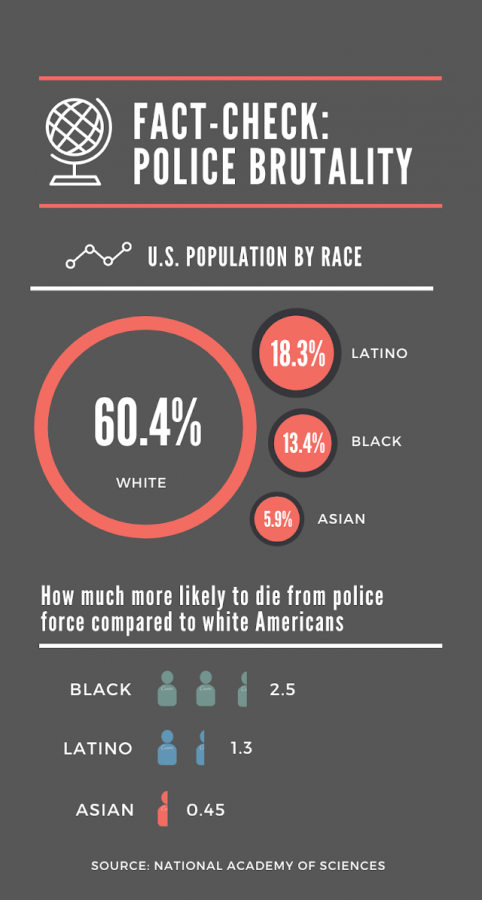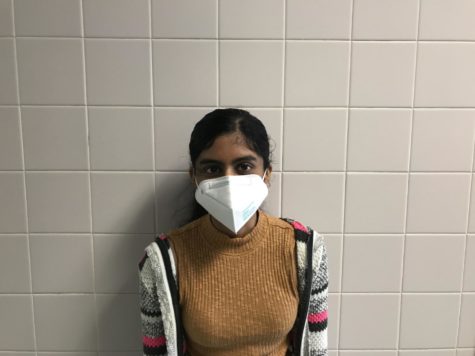Nationwide Black Lives Matter protests confront police brutality
Despite accounting for only 13.4% of the U.S. population, Black Americans are 2.5 times more likely to be shot and killed by police than white Americans.
July 7, 2020
Since the murder of George Floyd, Black Lives Matter protests in not only the U.S., but also across the world, have erupted in public outcry against systemic racism. Both peaceful protests and escalated riots have been met with city and sometimes state police forces, sparking controversy. Videos have surfaced revealing police aggression against peaceful protesters, which has strengthened the call for reform.
In one such incident, Martin Gugino, a 75-year-old social justice activist, suffered a severe brain injury and skull fracture on June 4 after being shoved to the ground by police officers in Buffalo, New York. Buffalo police initially claimed that the man slipped and fell, but video evidence proved otherwise.
“There are many ways to deescalate uncomfortable situations without the use of excessive force and violence,” senior Eva Brandan said. “In many cases, protesters are peaceful and have given no reason for police to use the aggression that they do.”
Police officers have employed weapons such as tear gas, rubber bullets and pepper spray to disperse peaceful crowds of civilians. Despite being labelled as non-lethal, these weapons are capable of causing severe and fatal harm. Tear gas is especially deadly considering the ongoing coronavirus pandemic, which targets respiratory health.
“The current protests against police brutality are fascinating in that they are, to some extent, self-sustaining,” senior Michael Massingill said. “Protests lead to police brutality, which leads to more protests, which leads to more brutality.”
These violent responses from the police generate more hatred toward the police system. Although many protests are peaceful and not met with police aggression, the presence of a police force is still worth noting. Mainstream media often chooses to highlight violent riots, overlooking the many peaceful demonstrations.
“In the marches, a group of over 100 people walked down the street and, while holding their signs, chanted some phrases related to the movement,” Brandan, who had been to three protests in Fairfax and Chantilly, said. “The police and overhead helicopters were present at some of these protests, but we remained steadfast and luckily the police didn’t intervene.”
Despite the news coverage of protests dying down, people are still organizing and participating in them. The younger generation has become arguably more active and vocal than any other in combating issues like police brutality. Many like Brandan have gone to protests and continued to inform others about them.
“I feel that attending protests can make a huge impact,” Brandan said. “I look forward to attending more in the future.”
Though many peaceful exchanges have occurred between protesters and police forces, hostility and arrests have ensued all over the country. Mass arrests of protesters and journalists on-scene have been captured on video and spread across social media. Despite not actively participating in the protests, a CNN reporting crew in Minneapolis was arrested for refusing to move on May 29. The live video footage showed the reporter remaining passive and clearly telling the state police force that they would move wherever they were instructed to. As a result, this video caused outrage and went viral.
“The mass arrests don’t seem fair, since a lot of these protests are peaceful,” senior Morgan Lee said. “As for the journalists, I don’t think it’s right for them to be arrested along with protesters, as they’re just doing their job of broadcasting current events.”
The reporter was later released, but the video served as a reminder of all of the other journalists that were unjustly arrested by the police. According to the Niemann Foundation of Journalism, the U.S. police had arrested or attacked journalists over 140 times between May 28 and June 1.
“The persecution of journalists has been widespread during the current protests,” Massingill said. “From a CNN crew being arrested to reporters being shot at, such behavior is a shocking violation of the American principle of a free press.”
The continuation of protests has prompted a wave of new police reforms throughout the U.S., meant to reduce the use of lethal force by police and hold them accountable for breaking the law. On June 15, the Seattle City Council banned the use of crowd control weapons, including tear gas and pepper spray, and chokeholds by police. The same day, Connecticut Governor Ned Lamont signed an executive order that required police officers to wear body cameras and report all use of force against civilians. President Trump signed an executive order on June 16 to create a national registry for officers with a track record of excessive force and to provide federal grants for police departments that ban chokeholds. Throughout the month of June and beyond, similar reforms have swept across the U.S., paving the way for safer and fairer police institutions.
While there is still a long road ahead for reform, there are many positive effects that have helped to strengthen the BLM movement. With the help of social media, more and more people are recognizing the flaws of the current system. Petitions and protests exhibit the unwavering will of many to make drastic and permanent changes to the police.
“Opening the eyes of white America to the life-and-death problems suffered by the Black community took many years, but I think that Americans of all colors now finally recognize that the time for excuses is over,” Massingill said. “And the time for action has arrived.”




